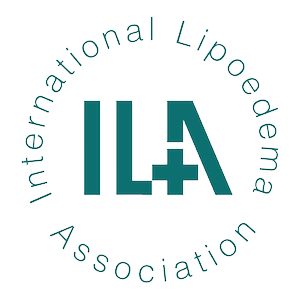 Mike Weiler
Mike Weiler
PhD
Co-founder & CEO – LymphaTech

Innovations and New Solutions for Lymphedema Measuring
Thursday, May 2, 6:30pm – 7:00pm
Patients and clinicians have been lacking an effective means to measure and monitor early-stage lymphedema. For later-stage lymphedema, existing methods for measuring body-volume changes can be unaffordable, error-prone, and time-consuming and typically require trained operators. This workshop will introduce you to a fast, low-cost, highly-accurate, quantitative body-volume measurement system developed by LymphaTech that generates a 3D model of the patient. The system is designed specifically for lymphedema monitoring and tracking and for compression-garment sizing. This new method ensures consistent, clinically-relevant limb geometry data.
Objectives
- Describe the current shortcomings of existing measurement approaches.
- Explain the advantages of a 3D measurement approach.
References
Hayes SC, Johansson K, Stout NL, et al. Upper-body morbidity after breast cancer: incidence and evidence for evaluation, prevention, and management within a prospective surveillance model of care. Cancer. 2012;118(8 Suppl):2237-2249.
Hayes SC, Janda M, Cornish B, Battistutta D, Newman B. Lymphedema after breast cancer: incidence, risk factors, and effect on upper body function. J Clin Oncol. 2008;26(21):3536-3542.
Hayes SC, Rye S, Battistutta D, Newman B. Prevalence of upper-body symptoms following breast cancer and its relationship with upper-body function and lymphedema. Lymphology. 2010;43(4):178-187.
Norman SA, Localio AR, Potashnik SL, et al. Lymphedema in breast cancer survivors: incidence, degree, time course, treatment, and symptoms. J Clin Oncol. 2009;27(3):390-397.
Binkley JM, Harris SR, Levangie PK, et al. Patient perspectives on breast cancer treatment side effects and the prospective surveillance model for physical rehabilitation for women with breast cancer. Cancer. 2012;118(8 Suppl):2207-2216.
Hormes JM, Bryan C, Lytle LA, et al. Impact of lymphedema and arm symptoms on quality of life in breast cancer survivors. Lymphology. 2010;43(1):1-13.
Gerber LH, Stout NL, Schmitz KH, Stricker CT. Integrating a prospective surveillance model for rehabilitation into breast cancer survivorship care. Cancer. 2012;118(8 Suppl):2201-2206.
Chance-Hetzler J, Armer J, Van Loo M, et al. Prospective Lymphedema Surveillance in a Clinic Setting. J Pers Med. 2015;5(3):311-325.
Stout NL, Pfalzer LA, Springer B, et al. Breast cancer-related lymphedema: comparing direct costs of a prospective surveillance model and a traditional model of care. Phys Ther. 2012;92(1):152-163.
Stout Gergich NL, Pfalzer LA, McGarvey C, Springer B, Gerber LH, Soballe P. Preoperative assessment enables the early diagnosis and successful treatment of lymphedema. Cancer. 2008;112(12):2809-2819.
Levenhagen K, Davies C, Perdomo M, Ryans K, Gilchrist L. Diagnosis of Upper Quadrant Lymphedema Secondary to Cancer: Clinical Practice Guideline From the Oncology Section of the American Physical Therapy Association. Phys Ther. 2017;97(7):729-745.
Sander AP, Hajer NM, Hemenway K, Miller AC. Upper-extremity volume measurements in women with lymphedema: a comparison of measurements obtained via water displacement with geometrically determined volume. Phys Ther. 2002;82(12):1201-1212.
Deltombe T, Jamart J, Recloux S, et al. Reliability and limits of agreement of circumferential, water displacement, and optoelectronic volumetry in the measurement of upper limb lymphedema. Lymphology. 2007;40(1):26-34.
Stanton AW, Northfield JW, Holroyd B, Mortimer PS, Levick JR. Validation of an optoelectronic limb volumeter (Perometer). Lymphology. 1997;30(2):77-97.
Sharkey AR, King SW, Kuo RY, Bickerton SB, Ramsden AJ, Furniss D. Measuring Limb Volume: Accuracy and Reliability of Tape Measurement Versus Perometer Measurement. Lymphat Res Biol. 2018;16(2):182-186.
Hidding JT, Viehoff PB, Beurskens CH, van Laarhoven HW, Nijhuis-van der Sanden MW, van der Wees PJ. Measurement Properties of Instruments for Measuring of Lymphedema: Systematic Review. Phys Ther. 2016;96(12):1965-1981.
Yahathugoda C, Weiler MJ, Rao R, et al. Use of a Novel Portable Three-Dimensional Imaging System to Measure Limb Volume and Circumference in Patients with Filarial Lymphedema. Am J Trop Med Hyg. 2017;97(6):1836-1842.
Shrout PE, Fleiss JL. Intraclass correlations: uses in assessing rater reliability. Psychol Bull. 1979;86(2):420-428.
Bland JM, Altman DG. Statistical methods for assessing agreement between two methods of clinical measurement. Lancet. 1986;1(8476):307-310.
Abu-Arafeh A, Jordan H, Drummond G. Reporting of method comparison studies: a review of advice, an assessment of current practice, and specific suggestions for future reports. Br J Anaesth. 2016;117(5):569-575.
McLaughlin SA, Staley AC, Vicini F, et al. Considerations for Clinicians in the Diagnosis, Prevention, and Treatment of Breast Cancer-Related Lymphedema: Recommendations from a Multidisciplinary Expert ASBrS Panel : Part 1: Definitions, Assessments, Education, and Future Directions. Ann Surg Oncol. 2017;24(10):2818-2826.
Lai L, Binkley J, Jones V, et al. Implementing the Prospective Surveillance Model (PSM) of Rehabilitation for Breast Cancer Patients with 1-Year Postoperative Follow-up, a Prospective, Observational Study. Ann Surg Oncol. 2016;23(10):3379-3384.
Stout NL, Binkley JM, Schmitz KH, et al. A prospective surveillance model for rehabilitation for women with breast cancer. Cancer. 2012;118(8 Suppl):2191-2200.
About the Presenter
 Dr. Mike Weiler, PhD, is the co-founder and CEO of LymphaTech, an industry leader in three-dimensional human body imaging and anatomical measurements. Dr. Weiler received his PhD in Biomedical Engineering from Georgia Tech where he was a recipient of the National Science Foundation Graduate Research Fellowship and a graduate of the NSF I-Corps program. He worked in the Laboratory of Lymphatic Biology and Bioengineering (LLBB) led by Dr. Brandon Dixon; there, Dr. Wiler’s research was devoted to developing new animal models to study lymphedema and to engineering optical systems to quantify lymphatic function during the disease progression. During his tenure at Georgia Tech, Dr. Weiler was also a TI:GER Fellow; the TI:GER program teaches how to commercialize research technology.
Dr. Mike Weiler, PhD, is the co-founder and CEO of LymphaTech, an industry leader in three-dimensional human body imaging and anatomical measurements. Dr. Weiler received his PhD in Biomedical Engineering from Georgia Tech where he was a recipient of the National Science Foundation Graduate Research Fellowship and a graduate of the NSF I-Corps program. He worked in the Laboratory of Lymphatic Biology and Bioengineering (LLBB) led by Dr. Brandon Dixon; there, Dr. Wiler’s research was devoted to developing new animal models to study lymphedema and to engineering optical systems to quantify lymphatic function during the disease progression. During his tenure at Georgia Tech, Dr. Weiler was also a TI:GER Fellow; the TI:GER program teaches how to commercialize research technology.



